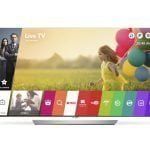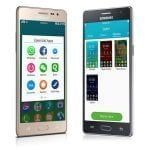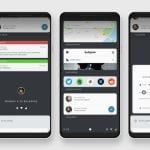Huawei’s Hongmeng OS had a fair share of the limelight after the Trump administration put up restrictions against American companies working with the Chinese tech giant. It was dubbed as an Android alternative, though faster and designed to work on different form factors including phones, IoT devices, TVs etc.
Hongmeng OS is not the first operating system we have seen dubbed as the next alternative to the iOS and the Android duopoly as there are more like it. Others have had a fair share of success while others are still experimental and below is a list of six them.
1Fire OS
Just like Hongmeng, Fire OS is based on Android but owned by Amazon. It runs Amazon’s device portfolio that includes e-Book Readers, TVs, Streaming boxes, sticks among others. It is a forked version of Android and this means it doesn’t come with Google services as it is based on the AOSP version of Android with tweaks from Amazon ranging from its look and feel. Fire OS even once ran the ill-fated Fire Phone before Amazon discontinued it but now lives on in Amazons Echo line of devices, smart TVs among others.
2WebOS
WebOS has had many named before being the WebOS we know of it today. These were Open WebOS, HP WebOS, Palm WebOS among others. This is the operating system that ran the original Palm smartphone before that company was bought by HP which also surrendered it to LG.
WebOS is designed to run on smart devices and it is famous for running LG’s set of appliances especially Smart TVs that we have come to love.
It is based on a Linux-kernel much like Android but lives on in the form of LG appliances like TVs, refrigerators, projectors etc.
3Tizen
Much to many people’s surprise, Tizen is actually not owned by Samsung but its software development kit has proprietary components owned by the South Korean giant, after merging its own Bada OS with what was MeeGo to form Tizen.
Tizen is an open-source Linux based mobile operating system backed by the Linux Foundation though primarily supported by Samsung. It runs on a range of smart devices that include TVs, Wearables, Phones among others most of which bear the Samsung brand name.
4Fuschia OS
Much like Android, Fuschia is owned by Google though it is not based on Linux much like other operating systems we have articulated, rather it is based on a microkernel called Zircon. It’s touted to run even on low powered devices ranging from embedded systems, smartphones, tablets as well as other devices.
We haven’t yet seen any commercial deployment of Fuschia but it dubbed as the future of Google’s OS vision unlike Chrome OS and Android whose marriage has proved troublesome to the US tech giant. Fuschia is dubbed to overcome that particular hurdle.
5iOS
iOS is Apple’s mobile operating system that powers its popular iPhone line of smartphones though it has been tweaked into different variations based on form factors like tvOS for Apples’ streaming boxes, WatchOS for Apple’s wearables and now iPad OS for Apple’s iPad line of devices. Tweaks to iOS have seen it getting toned down to accommodate various form factors like WatchOS and in some instances beefed up like for the case of iPadOS to take advantage of larger form factors including multitasking, multi-window support among others to better compete with Windows-based laptops.
6And there is Android, Hongmeng’s biggest rival
Android is Android! Period. It is an open-source OS developed by Google, it runs across different devices and form factors with the prevalent one being a smartphone. Google has also torn it town to run on low powered devices like watches, IoT devices, cars, TVs but it is yet to see the same level of success as is with smartphones.
Majority of the operating systems above were a direct reply to Android with the exception of iOS though even this has over and again borrowed features from it.







